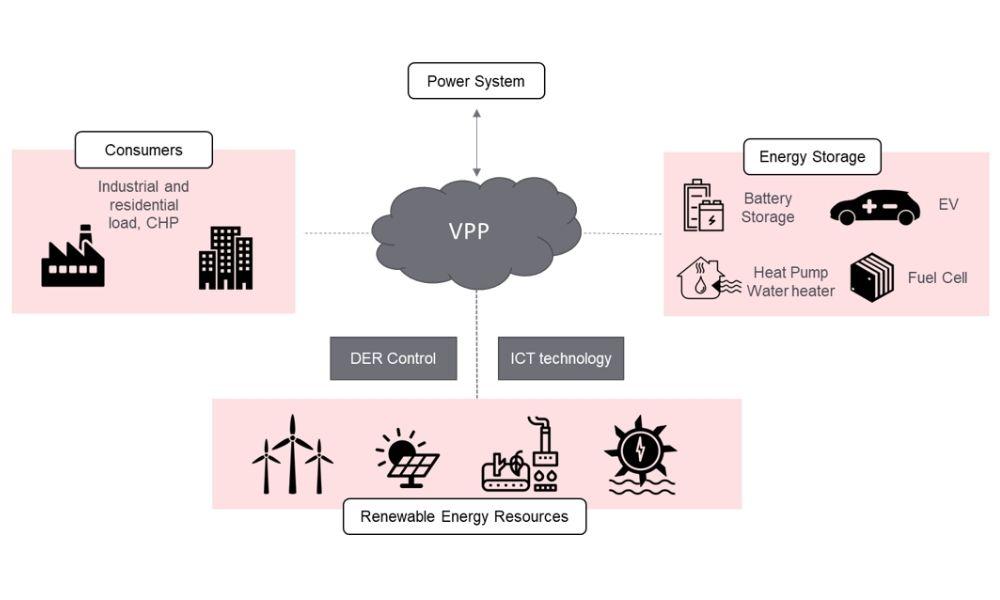What Makes Virtual Power Plants Stand Out?
What is a VPP?
A Virtual Power Plant (VPP) is a new type of power coordination and management system that uses information technology and software systems to aggregate and collaboratively optimize multiple distributed resources, such as photovoltaic, energy storage, and adjustable loads.
Core Capabilities
VPP integrates dispersed energy resources into a controllable whole through algorithmic optimization, responding flexibly to grid demand.
Core Values
Peak Shaving and Valley Filling: Discharges energy during peak times and charges during off-peak to relieve grid pressure.
Enhancing Renewable Energy Utilization: Reduces curtailment through intelligent scheduling, improving renewable energy use.
Lowering Energy Costs: Users receive subsidies for demand response participation, while companies earn profits from peak and off-peak price differences.
Differences from Traditional Power Plants
No Physical Units: Does not build new generating equipment; instead, it integrates existing resources.
Flexible Response: Adjusts generation or consumption rapidly based on grid needs.
How does a VPP work?
3 Core Components
Distributed power: Rooftop solar, small wind turbines, biomass power.
Energy storage systems: Batteries, hydroelectric power stations, etc. for “peak shaving and valley filling”.
Adjustable load: factory production lines, air conditioners in shopping malls, and other equipment that can be started and stopped flexibly.

Operating Process
Step 1: Real-time monitoring of smart meters, and sensors to collect data related to power generation, energy storage status, electricity demand, etc.
Step 2: Unified scheduling algorithm analyzes grid demand (e.g., peak electricity consumption) and makes automatic decisions:
- Initiate energy storage discharge
- Reduce factory electricity consumption
- Utilize distributed energy sources to supply electricity
Step 3: Market trading “packages” the aggregated power resources and sells them to the grid or power users, earning a price difference.
A case in point is a virtual power plant in Germany that integrates 2,000 household solar systems. On sunny days, it delivers surplus power to the grid and uses storage for power on cloudy days, reducing carbon emissions by 12,000 tons per year.
What Problems Can VPP Solve?
Cope with renewable energy volatility
Wind and photovoltaic power generation is unstable, and VPP can quickly balance supply and demand.
For example, when wind power suddenly decreases, immediately start the energy storage or reduce the power load of the plant.
Reduced cost of grid upgrades
Traditional grids require line expansion for peak loads, which increases costs. Virtual power plants, on the other hand, can reduce grid investment by 30% by regulating electricity consumption.
Unlocking Customer Value
Households: Households that install solar energy can sell excess electricity to a VPP for revenue.
Factories: Participating in load regulation can lead to energy savings of 10%-15% each year.
Real-World Applications of VPP
Urban Electricity
Commercial buildings: HVAC systems automatically adjust by 1°C during peak pricing, reducing load.
Charging Stations: Smart adjustment of electric vehicle charging power based on grid instructions.
Rural Microgrids
The VPP will integrate village solar and small hydropower to form a self-sufficient power system, reducing outages by about 70%.
Emergency power supply
In 2021, when a cold snap hit the state of Texas in the U.S. and there was a power outage, the virtual power plant dispatched 5,000 households to store energy to provide emergency power to hospitals and other public units.

Conclusion
The VPP is not a science fiction concept, but realizable energy solutions. It allows every solar panel and every air conditioner to become a “regulating cell” of the grid, ultimately realizing a cheaper, more stable, and cleaner electricity future.